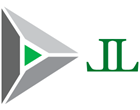To find information about your devices and current partitions run:
# dmesg | less
# dmesg | egrep -i 'cd|dvd'
# fdisk -l
Use the first command to identify the USB device name.
Mount CD/DVD ISO or DVD ITSELF
Type the following command to mount Fedora 12 iso image:
# mount Fedora-12-x86_64-netinst.iso -o loop /media/cdrom0/
# DVD=/media/cdrom0
# ls -l $DVD
Sample outputs:
total 6
dr-xr-xr-x 3 root root 2048 2009-11-09 05:37 EFI
drwxr-sr-x 3 root 499 2048 2009-11-09 05:37 images
drwxr-sr-x 2 root 499 2048 2009-11-09 05:36 isolinux
You need to use files stored in isolinux directory to create a bootable usb pen.
Format Usb
Create the fdisk partition:
# fdisk /dev/sdb
You need to create only 1 partition. Next format the partition:
# USB=/media/usb
# mkdosfs /dev/sdb1
Finally mount the partition:
# mkdir -p /media/usb
# mount /dev/sdb1 /media/usb
# USB=/media/usb
Copy Required Files
Type the following commands:
# cp -av $DVD/isolinux/* $USB
# cd $USB
# rm isolinux.bin boot.cat TRANS.TBL
# mv isolinux.cfg syslinux.cfg
Also copy the installer's initial RAM disk $DVD/images/pxeboot/initrd.img (for CentOS / RHEL Linux use $DVD/RedHat/images/pxeboot/initrd.img file) CD/DVD onto the usb drive:
# cp -v $DVD/images/pxeboot/initrd.img $USB
Unmount the USB drive
# umount /dev/sdb1
Make the USB Bootable
Type the following command to make the USB drive bootable
# syslinux /dev/sdb1
# mount /dev/sdb1 $USB
syslinux is a boot loader for the Linux operating system which operates off an MS-DOS/Windows FAT filesystem.
Install Grub
Type the following command to install GRUB on the USB device:
# grub-install --root-directory=$USB /dev/sdb
Create grub.conf:
# cd $USB
# mkdir -p boot/grub
Edit the grub.conf file
default=0Finally, unmount the USB pen drive, enter:
timeout=5
root (hd1,0)
title Fedora Linux
kernel /vmlinuz
initrd /initrd.img
# umount /dev/sdb1
